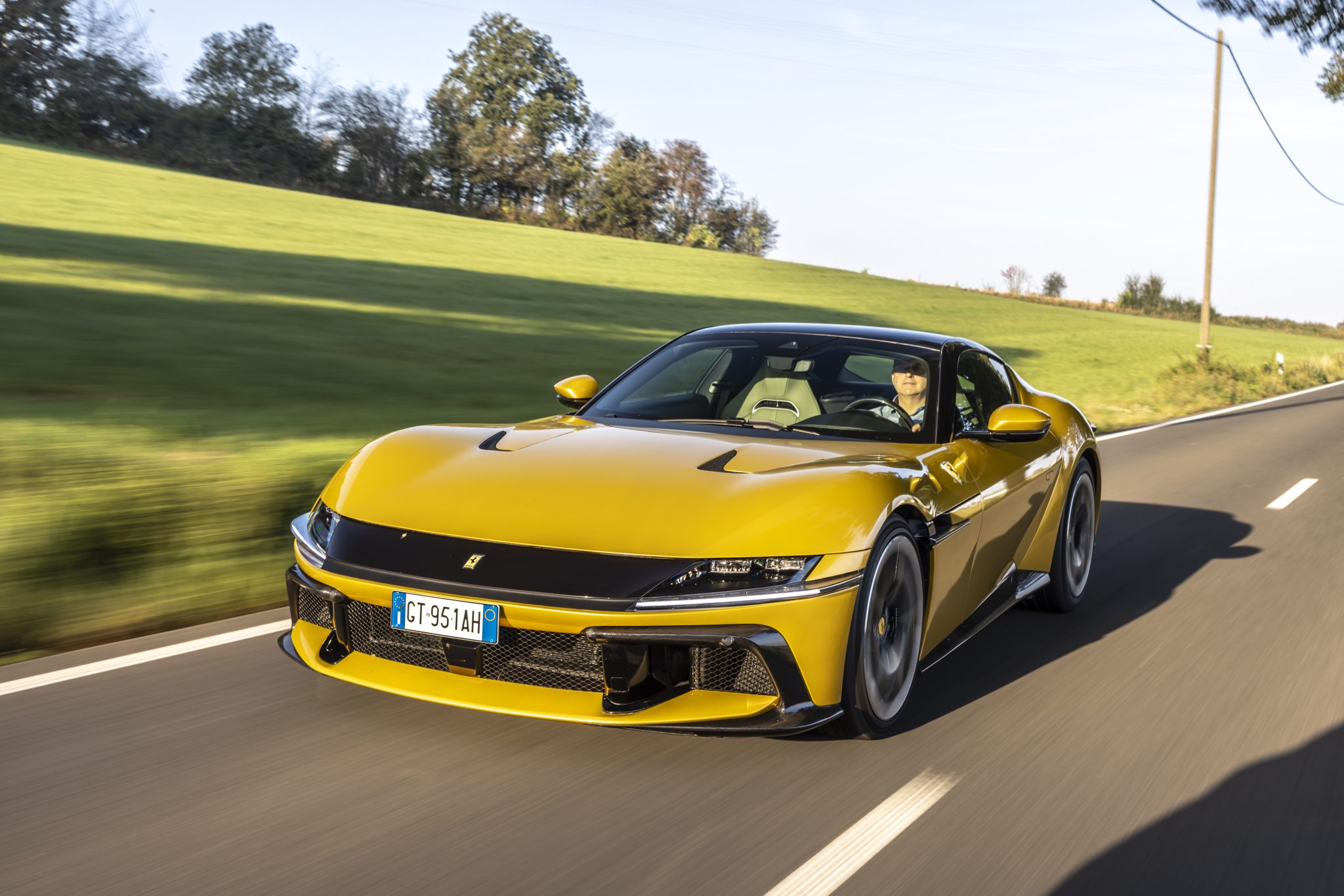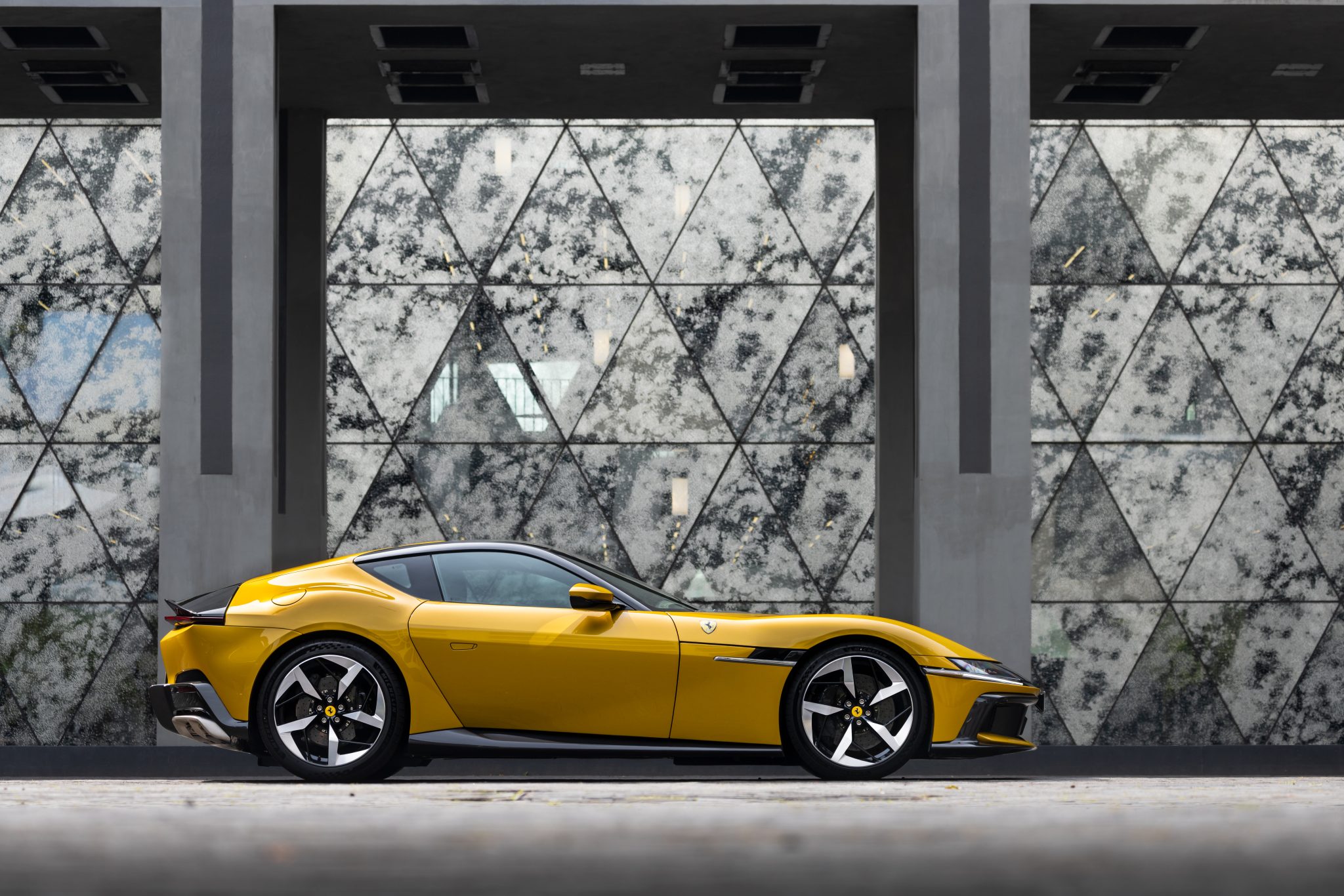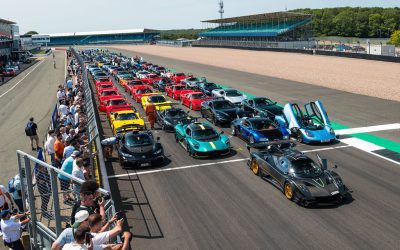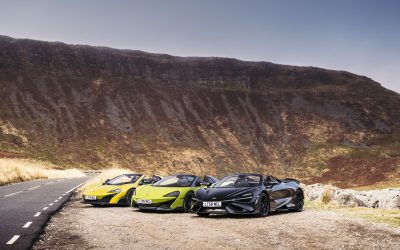Ferrari 12Cilindri Review: A Grand Tourer with a Supercar Soul
Is the new V12 Ferrari just an excuse to dress an old concept in a new set of duds, or is there something else going on here? Andrew Frankel finds out.
More fool me for breaking hack rule one: never reach a conclusion about a car you’ve never even sat in. Looking at it written down, I concede now this seems a fairly basic mistake to make. In my defence, let’s look at what we have here: a front-engined, rear-drive, two-seat supercar powered by a naturally aspirated 6.5-litre V12 driving a dual-clutch gearbox. A car with aluminium panels and an aluminium spaceframe chassis, double wishbone front suspension, a multi-link rear axle and carbon ceramic brakes. A car that accelerates from rest to 62mph in 2.9sec, to 124mph in 7.9sec with a top speed of 211mph. Problem is, this is a description that fits to the letter not only the 12Cilindri but also the 812 Superfast it is designed to replace. So I thought, not unnaturally, that that’s what it would be like, only more so. But it isn’t.

Ferrari 12Cilindri | Credit: Ferrari media house
Technical Evolution and Design Lineage
But of course the lineage is very clear, and no one is denying the engine is from the same F140 family created for the Enzo no fewer than 22 years ago. Now that the engineers have bumped its output up to 819bhp and a specific output of 126bhp per litre, they quietly acknowledge it’s now at the limit of what can be achieved within the prevailing emissions environment and making it compliant with the forthcoming Euro 7 regs would be ‘an enormous challenge’. But given Ferrari has said it will not give up on the V12 motor, it seems it’s committed to building a brand new, future-proofed V12. Which is good to hear.
That, of course, is all for another time. Looks aside, then, how does the Dodici (emphasis firmly on the first syllable) Cilindri actually differ from the 812? It’s a little more powerful, up from 789bhp for the Superfast and 815bhp for the 812 Competizione, but interestingly it has a little less torque than either, which you can bet has been sacrificed on the altar of emissions compliance. Ferrari says the car’s 35kg heavier than the Superfast but actually finding out what a standard 12Cilindri weighs in ready to drive form was, I am afraid, beyond me. It was not for a lack of trying.
Weight and Performance Considerations
However my calculations suggest this is actually quite high, leaving me to suspect it’s a ‘EU’ rather than a ‘DIN’ weight, which should therefore be knocked back by 75kg… In the hope you’re still awake and having crunched all the data I can find from Ferrari and elsewhere, I think the car actually weighs around 1685kg by the same measure we use for all other cars, which is only 15kg heavier than the figure I have for the Superfast (which in itself may not be reliable) but it’s the best I’ve got and I’m going to stop now because my head is starting to hurt.
Table of contents
Ferrari 12Cilindri | Credit: Ferrari media house
Styling and Design Philosophy
Visually it is as different to a Superfast as it seems to be mechanically similar. It looks like the board tasked the design team with coming up with the most avantgarde styling imaginable but – and here’s the twist – imagining the start point was the early 1970s. But it works. Regulars will know we recently spent some time in a Plexiglas Daytona and this is as successful a reimagining of that car as you could reasonably hope. The back works less well than the front, both aesthetically and in use where the shape of the rear screen limits over the shoulder visibility, but the overall proportions are delectable. Its presence in the mirror, though, is much less aggressive than that of a Superfast. You may wonder why that may be. I certainly did, at least at first. But it’s just the second clue.
Driving Experience and Road Performance
On a rather more positive note, there’s a central screen on the dash so you don’t have to choose between having CarPlay or seeing your rev counter as you do in a Purosangue. Ferrari won’t admit to this being an absolute howling error, but they don’t need to: the fact they’ve corrected it at the first possible opportunity tells you all you need to know.
Otherwise, it’s standard Ferrari fare: great looking screen graphics but overly complex information presentation, a similarly over-worked steering wheel but with the brilliant little manettino as present and useful as ever.
It’s time to go, so I press the area on the steering wheel which fires up the V12 and hear it whoomph elegantly into life. I’m not sure if I’ve just invented ‘whoomph’ but it’s important to understand that it doesn’t howl, growl, thunder, roar or do anything else that might more traditionally be used to describe the awakening of a mighty Maranello V12. It whoomphs.
A tug on the paddle and one thing I already know before I’m off the grounds of the Luxembourg (yes, Luxembourg) hotel is that the ride quality is phenomenal. Silken, glossy, near limo-like bump absorption. Ferrari has been on top of this sort of thing with almost all its cars for years now, but this is a new level for its V12 supercar. And, like that, another piece of the puzzle falls into place.
We’re up to reasonable speed now on quiet roads, just gently swishing the wheel from left to right, seeing how the car responds. The steering is more linear and less reactive which counts in my head as a good thing. All that off-centre aggression shown particularly by cars like the F12 has all but gone now. It’s still not quite as eerily consistent as McLaren or Porsche steering – I expect Ferrari customers want to retain a little of that sense of sharpness – but it’s closer than ever before. And that’s a corner piece.
I’m interested in the sound too, because you’d expect a 6.5-litre naturally aspirated V12 that doesn’t quit until 9500rpm to sound like Mozart commissioned to set the end of world to music. But it’s not like that. Clearly the joy police have some responsibility here because Ferrari is keen to stress how hard it has tried to ensure the noise stays inside the cabin rather than offending the daisies, but even so the sound is actually quite muted at low revs, still slightly muffled in the mid-range and while as tuneful and soulful as you might ever hope as the redline approaches, still not loud. Anyone who wants their V12 Fandango to yell them all the way to heaven will likely be somewhat disenchanted.
Table of contents

Ferrari 12Cilindri | Credit: Ferrari media house
The transmission is great too, in the main. It shifts near enough perfectly in Sport mode, but bangs the changes through in Race – fine if you’re looking for a full Ferrari sensory experience, but an unwelcome distraction the rest of the time. But the engine is far sharper in Race. What you want is the Sport set up for the gears combined with the Race map for the engine, but there’s no ‘Individual’ mode like those provided in wildly cheaper BMWs and Mercedes which allow you to separate out each function and choose the settings you want. It’s not a big deal, but a V12
Ferrari berlinetta should provide its driver with at least the same level of choice. A word on the Ferrari 12cilindri price: £336,500 before options. To those who’ve just disgorged their cornflakes should be aware that, inflation adjusted, it’s a trifling £8000 more expensive today than was the Superfast when new in 2017.
Once I’d reached these preliminary conclusions and realised I was going to lose whatever little hair I had left trying to persuade the nav to follow Ferrari’s chosen route (there’s no embedded navigation system), I gave up, plugged in Waze and set a course due north to Spa. Soon I was in Belgium, on an empty E42 dual carriageway, Race mode on the manettino, ‘bumpy road’ dampers selected, and cruising.
At first I thought there was far too much wind noise but then looked at the entirely unmentionable speed that had accrued on the readout and realised that may have something to do with it. Like a Daytona, it just gets better the faster you go and a speed that might earn you a lengthy stretch in Chokey feels utterly relaxed, easy and natural. Or so I’m told. This will be a blindingly good long distance car for those clever, lucky or rich enough to evade or absorb the possible consequences. It wasn’t long before I was on roads I’ve known since I did my first Spa Six Hours race exactly 20 years ago. I know exactly where to go to put such a car through its paces on these roads and it did not disappoint. Which is not to say it gripped until brains oozed out of my ears, or was a flawless paragon of feel, poise and pace. It was none of these things. It was instead supremely reassuring, a far more valuable commodity in a car of such potential.
Handling and Ride Quality
At Spa I wandered around the old familiar haunts on the original circuit. The world’s best chip shop (for the quality of its location rather than its deeply mediocre produce) in the middle of the evil old Masta kink was closed, but I was still able to fire it through the never ending downhill right at Burnenville, taken in excess of 180mph in period, drivers balanced between life and, far too often, death. I went to Stavelot too where they’ve re-created the advertising hoardings from 1966, the year in which it featured in John Frankenheimer’s Grand Prix, still the best movie ever made about racing. I tried to get into the paddock too and in a hitherto unseen Giallo Montecarlo Ferrari thought I’d have a better chance than most, but still got shooed away.
Later that day and back in Luxembourg I was taken to an enormous test track belonging to Goodyear, the car’s other OEM tyre supplier, where I took it past 175mph and slid it through third and fourth gear corners. It did it all amiably enough, but felt too soft, eager to push its nose wide on entry, though by the apex it was not hard for your right foot to convince it of the error of its ways and exit in extravagant, deliciously controllable slides.
Table of contents
Ferrari 12Cilindri | Credit: Ferrari media house
Final Verdict: A New Direction for Ferrari
Which is this: for almost 60 years, ever since Ferrari first offered a car for sale with fewer than 12 cylinders, the two-seat V12 has always been the flagship, the most exciting Ferrari you could buy, at least so far as production cars are concerned, and please let’s not get delayed by the fact that some of those V12s had 180-degree bank angles. But that all changed in 2019, two years after the launch of the 812 Superfast. That was the year the SF90 Stradale made its debut, with a hybrid powertrain and a near 1000bhp output, a number no naturally aspirated, unassisted F140-based V12 was ever going to approach. It happens that the SF90 is my least favourite current Ferrari, but that scarcely affects its positioning. It is this car, and not the 12Cilindri which occupies the performance pinnacle.
Some might be disappointed that the 12Cilindri has relinquished the position but you really shouldn’t be for the reverse is true: it releases the car, sets it free to do what it can do best, to do what no hybridised, all-wheel drive, twin-turbo, flat-plane crank V8 car could ever do: work its way under your skin and keep going until it is firmly lodged in your heart.
Still not convinced? I feel like Poirot in the denouement parlour with a villain slowly clapping his hands saying, ‘it may be an interesting theory you jumped up, overblown blithering Belgian buffoon, but you’ll never be able to prove it…’ Except this, and I’ve checked. Every single two-seat production Ferrari of at least the last 30 years, and many more stretching back into the 1980s, came to market accompanied by an official Fiorano lap time. It was perhaps the key metric by which Ferrari could demonstrate a model line’s progress from one generation to the next. Yet no such number for the 12Cilindri exists. And no, they didn’t simply forget. I checked that too. The case, it is closed.
Should we feel less of the 12Cilindri as a result? Is it somehow less of a Ferrari? The thought is preposterous. What Ferrari is saying is that it’s no longer interested in the arms race, at least so far as this model line is concerned. If Lamborghini wants to strap on hybrid drives and head for quad digit outputs, that’s a matter for them; Ferrari has the SF90 in that space, the car that has liberated the V12 two-seater to return to its grand touring roots where going fast was never an end in itself. Is anyone actually bothered any more whether one car accelerates from rest to 62mph in 2.9sec and another takes 2.5? I couldn’t care less. Bear in mind too the space vacated by the GTC4 Lusso is now only partially occupied by the far heavier, substantially slower Purosangue. That’s allowed the 12Cilindri some sideways wriggle room too.
Even so it must have been a brave decision to take the V12 off the hamster wheel, stop pushing it in directions it was increasingly reluctant to go and just let it do what it does best, but the results speak for themselves. Far from perfect though it is, the 12Cilindri is what I’ve always wanted a two-seat V12 Ferrari to be: beautiful, suave, entertaining, effortless, and brilliant.
Table of contents
Ferrari 12Cilindri
Specifications
Engine: 6496ccV12, naturally aspirated
Transmission: 8-speed dual-clutch, RWD
Power: 819bhp @ 9250rpm
Torque: 500lb ft @ 7250rpm
Kerbweight: 1685kg (DIN, estimated)
Power-to-weight ratio: 486bhp/tonne
0-62mph: 2.9sec
Top speed: 211mph
Price: £336,500
Ti rating: 9/10

Ferrari 12Cilindri | Credit: Ferrari media house
JBR Capital customers are invited to subscribe to The Intercooler, the world’s only ad-free digital car magazine, for 20 per cent off. Click the link and use the coupon code JBR20 to redeem this exclusive offer.



